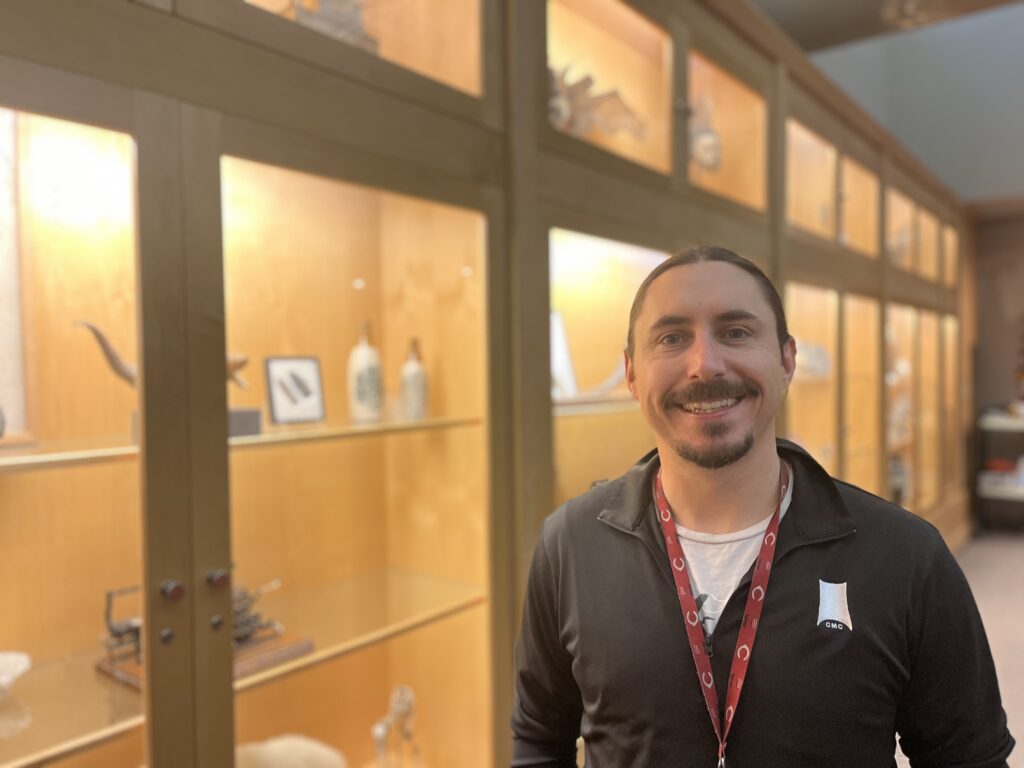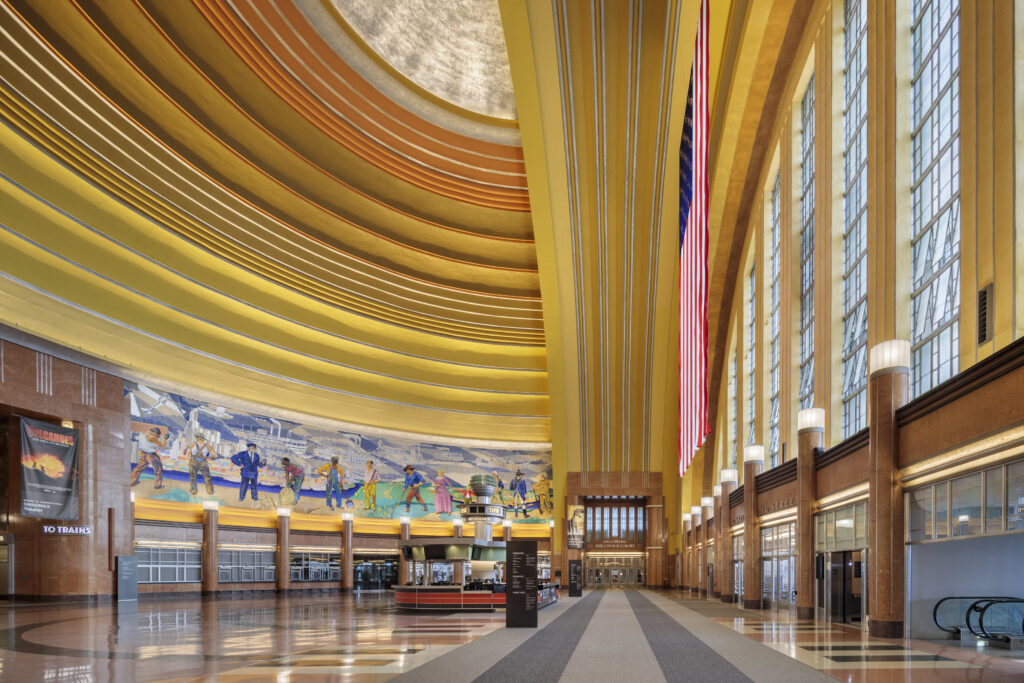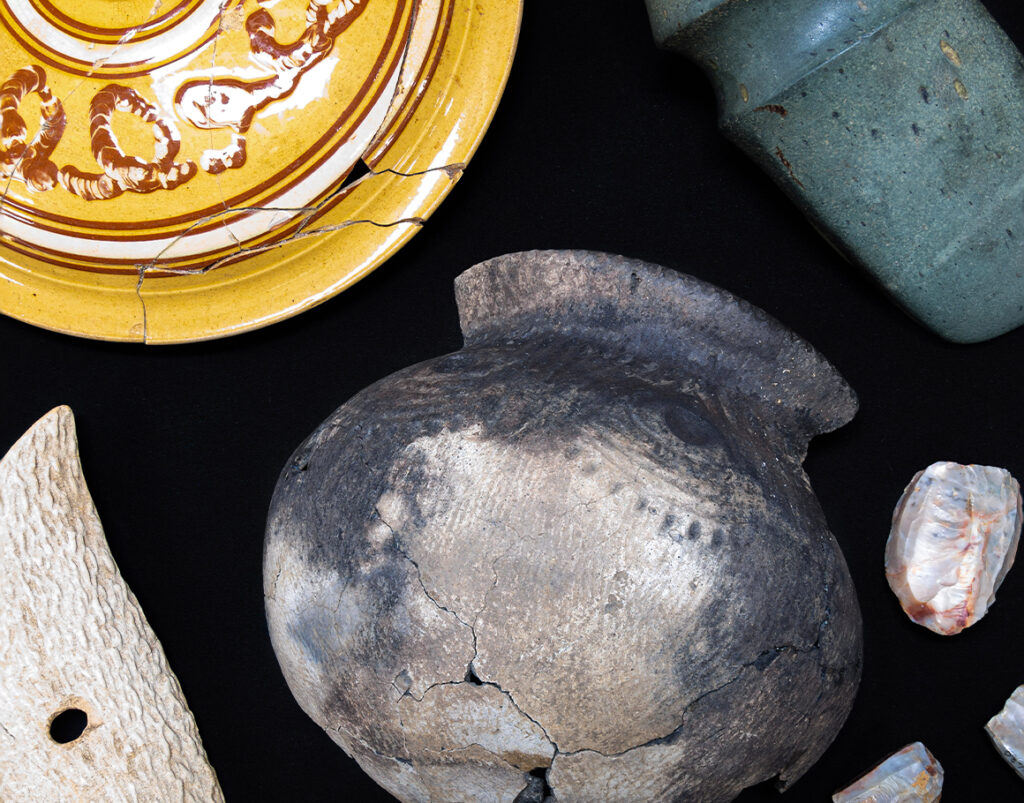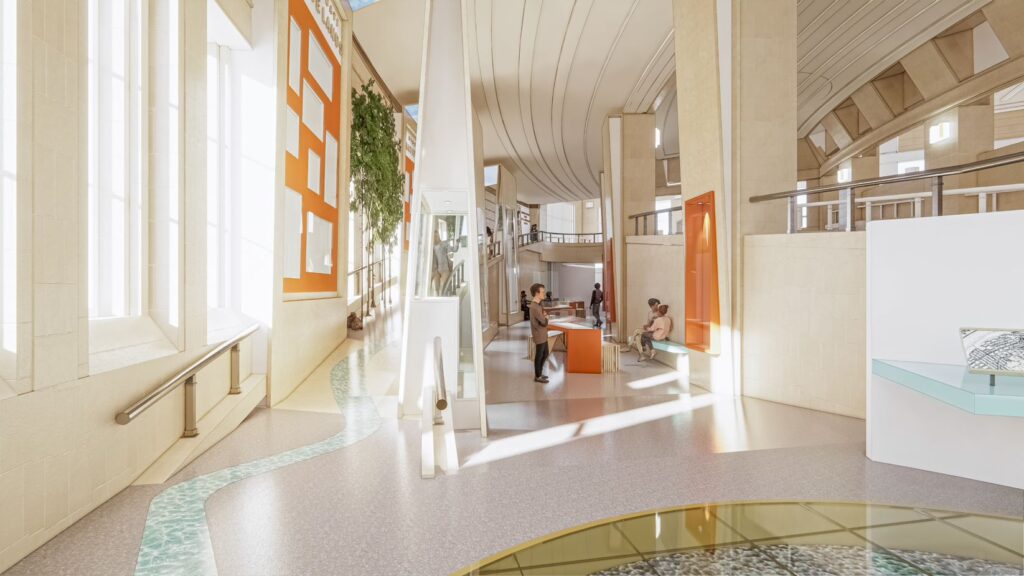
29th Annual Fall Forum
“This year’s Fall Forum speaker Julie Olds, is exceptionally knowledgeable about Miami cultural history. She is an excellent person to speak about how Native History is Ohio History,” said Tyler Swinney, NAGRPA Manager and Tribal Liaison who works at Cincinnati Museum Center.
Swinney is focused on indigenization versus decolonization. Indigenization is a way of interpreting local cultural phenomena and looking at it through a native lens or non-western lens… something that’s been overlooked so often in scientific inquiry and historic preservation. There are so many different ways to share and organize knowledge, and each way is useful to provide a holistic perspective. By prioritizing federally recognized tribes as primary stakeholders in interpreting their own cultural past, it gives us an opportunity to look at things from a perspective that emphasizes cultural preservation and revitalization. The incorporation of native traditional knowledge is a strong step toward indigenizing the literature base. He notes:

The Myaamia Center is a Miami Tribe of Oklahoma initiative located within an academic setting, serves the needs of the Myaamia people, Miami University, and partner communities through research, education, and outreach that promote Myaamia language, culture, knowledge, and values.

A New Exhibit Coming Soon
One of the greatest cultural resources of our area is both an architectural and historic landmark known as Union Terminal. Inside Union Terminal, a National Register Historic Landmark, is a multi-museum complex which includes the Cincinnati History Museum. This museum features several must-see exhibitions such as
- a recreation of the bustling Public Landing from the late 1850s
- a replica side-wheel steamboat
- an aerial view of Cincinnati from the early 1900s through 1940s with the nation’s largest S-scale train model
- interactive opportunities to meet the city’s inventors and laborers, the products they developed
- and more!
In 2026 or 2027, an Indigeous People’s gallery (working title) will be added to this list! In this exhibit, visitors can meet the region’s earliest inhabitants—Native Peoples of the Central Ohio Valley Scenic recreations, archaeological tools, contemporary Native American art and cultural items.

The exhibit came to fruition through conversation with Tribal Nations that started around compliance activities associated with the Native American Graves Protection and Repatriation Act (NAGPRA). This is federal human rights legislation meant to prioritize tribes as primary stakeholders in their own cultural past and includes implications around land use policies and property law.
Cincinnati is located at the confluence of several major rivers and multiple overland transportation routes so the cultural heritage here is rich and shows that native people have lived in North American for at least 20,000 years ago. Once underwater and under ice, the Cincinnati area and its climate has changed vastly over the centuries.
There are about 50 tribes with historic, geographic and cultural connections with Ohio, and the three with the main language groups affiliated with Ohio are the Algonquians, Siouan and Iroquoian tribes. As the NAGRPA Manager and Tribal Liaison, Tyler Swinney has been realizing this exhibit for many years.
He notes, “Native History is Ohio History. Native History is Amercian History. Indiana, Kentucky and Ohio are all terms that derived from Native American terminology.”


The goal of the exhibit is to highlighttribes that have connections to our area. These include federally recognized Shawnee, Miami, Peoria, Wyandotte, and Seneca-Cayuga tribes, among others. Information about monumental Earthworks, historic preservation, and tribal-focused cultural revitalization efforts will be included. Many tribes have Tribal Historic Preservation officers (THPO) who act similar to State Historic Preservation Officers (SHPO). They protect and assert their rights as sovereign nations to protect sites in their current lands as well as their ancestral territories.
“Historic Preservation goes below ground too. For example, Ohio has the largest concentration of Earthworks compared to anywhere else in the world, and it’s refreshing to see they are finally getting the recognition they deserve.” Swinney continues referring to the Hopewell Ceremonial Earthworks that were inscribed onto the UNESCO World Heritage list in 2023.

Places to Visit
Swinney encourages folks to visit sites for themselves, and he recommends a few in the region.
Thanks to collaborative efforts by Cincinnati Preservation, then known as Miami Purchase Association, some of our local Earthworks are protected to this day and in perpetuity. Miami Fort in Shawnee Lookout Park was very first national registered archaeological district in Ohio in 1974 and includes about 46 sites in the park (15 mounds, approximately 26 habitations, hilltop enclosure, etc). Visit the park to walk the trails and learn more about these incredible sites.
Plus check out the sites at Fortified Hill at Pyramid Hill Sculpture Park, Fort Ancient North America’s largest ancient hilltop enclosure earthwork, and Norwood Mound located at 2413 Indian Mound Ave, Cincinnati, OH 45212.
